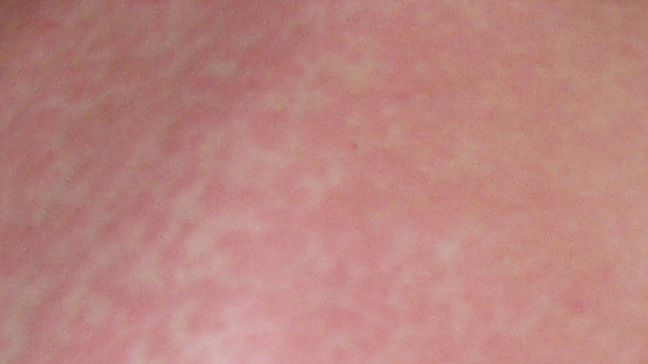
Toxic shock syndrome (TSS) is an acute toxin-mediated illness caused by toxin-producing Staphylococcus aureus, characterized by rapid onset of fever, hypotension, generalized skin and mucosal erythema, and multisystem failure, occurring in menstrual (MTSS) and nonmenstrual (NMTSS) patterns. Rarely, group A streptococcus (GAS) produces streptococcal toxic shock-like syndrome (TSLS).
Causes of Toxic Shock Syndrome
S. aureus multiplies in foreign body or minor wound infection, elaborating the TSST-1, which is absorbed and causes the clinical changes. TSST-1 causes decreased vasomotor tone and leakage of intravascular fluid. Rapid onset of hypotension followed by tissue ischemia and multisystem organ failure.
Symptoms of Toxic Shock Syndrome
- A sudden high fever.
- Vomiting or diarrhea.
- A rash resembling a sunburn, particularly on your palms and soles. After a week or so, the skin on your hands and feet generally begins to peel.
- Confusion.
- Muscle aches.
- Redness of your eyes, mouth and throat.
- Seizures.
- Headaches.
Diagnosis
TSS clinical case definition (per CDC):
Fever Temperature ≥38.9°C.
Rash Diffuse macular erythroderma.
Desquamation 1 to 2 weeks after onset of illness, particularly of palms, soles, fingers, toes.
Hypotension Systolic blood pressure ≤90 mmHg for adults. For children, >5th percentile by age 16 or younger. Orthostatic syncope or orthostatic dizziness.
Involvement of Three or More Specific Organ Systems
Treatment
Usually patients are managed best in intensive care facility.
Local Infection Remove potentially foreign bodies. Drain and irrigate infected sites.
Systemic Antimicrobial Therapy IV antistaphylococcal antibiotic.
Adjunctive Therapy Aggressive monitoring and management of specific organ system failure (i.e., management of fluid, electrolyte, metabolic, and nutritional needs). Methylprednisolone for severe cases.
References